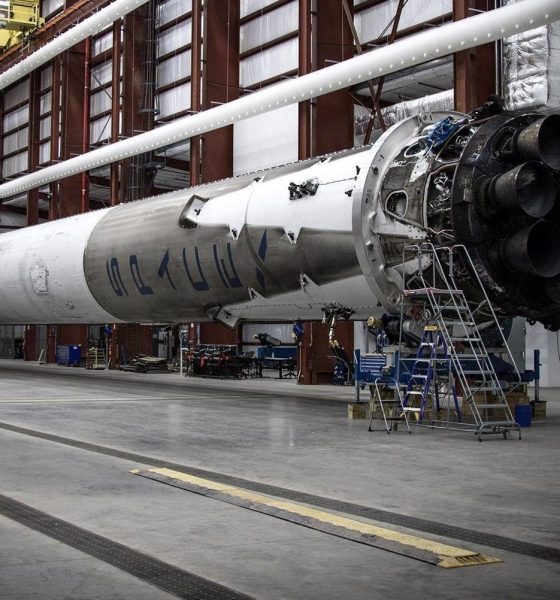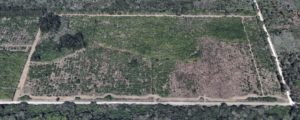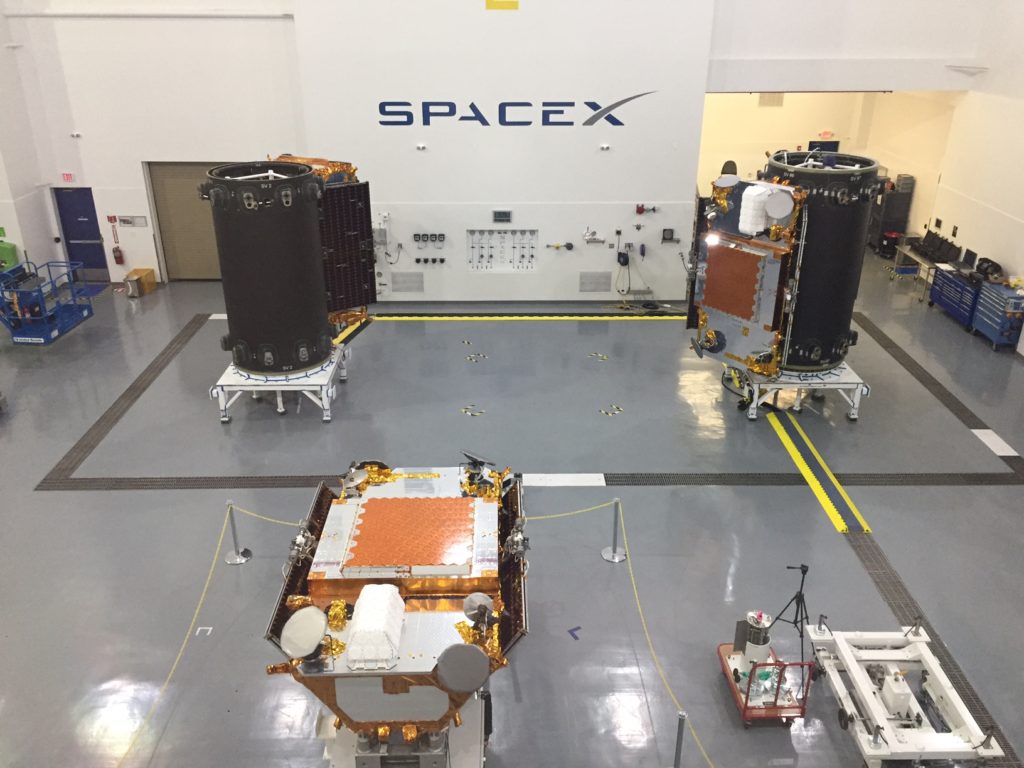

News
SpaceX to receive $15m from Florida to build Falcon refurbishment facility
The state of Florida’s Space Florida initiative is likely to award SpaceX nearly $15 million in support of the company’s recently-publicized plan to build a new Falcon rocket refurbishment facility and launch control center on Kennedy Space Center property.
All things considered, such an investment would be an extremely savvy move for the state, potentially speeding up an expansion that will pave the way – quite literally in terms of infrastructure — for SpaceX to support a dramatically larger launch cadence in Florida. Writing in an environmental assessment (EA) for the Richards Road project discovered in early June, the company provided a rough estimate for what that growth could look like:
“SpaceX estimates a possible 150 construction jobs associated with the initial development of the Proposed Action, and approximately 70 new SpaceX employees to support additional operations on KSC. SpaceX plans to launch more than 4,000 satellites with the intention that most of these satellites will be launched from LC-39A and LC-40.” (p. 39)
- Satellite imagery from Google Maps shows the currently-abandoned site of SpaceX’s prospective Florida expansion. (Google Maps)
- SpaceX’s Launch Complex 39A pictured in April 2018. (Tom Cross)
- TomCross photographing Falcon 9 with the Zuma payload at SLC-40.
In the case of “most” of “more than 4,000 satellites” being launched from Florida, SpaceX is undoubtedly referring to the first phase of their Starlink internet constellation, a program that is also rapidly growing an R&D team to complete the system’s production-ready design and build a state-of-the-art factory for the vast majority of the network’s major components. For context, 70-90 additional new employees would grow SpaceX’s Florida presence by as much as 20-30% from 2018 levels.
Teslarati reached out to SpaceX for further clarification on the Starlink-related comments in the EA, but the company could not be reached for comment on the matter. However, SpaceX was later able to provide a statement on their prospective Richards Road expansion, reprinted below.
“As SpaceX’s launch cadence and manifest for missions from Florida continues to grow, we are seeking to expand our capabilities and streamline operations to launch, land and re-fly our Falcon family of rockets.”
It’s worth noting that SpaceX President and COO Gwynne Shotwell told CNBC reporters in May 2018 that the company expected 2019 to look more like 2017 (18 launches), suggesting that next year will likely be 30-50% slower than its busy 2018 launch schedule. Although the COO did state that “2019 [will] probably be closer to 2017 due to lower demand”, she didn’t explicitly include non-commercial launches in her figuring.
- While SpaceX’s 2018 manifest is likely to support more annual launches than the company has yet to achieve, the trend slopes a bit down in the 12-24 months that follow. The SES-12 satellite is shown here and was launched in June 2018. (SES)
- Iridium NEXT satellites being attached to the payload dispenser at SpaceX’s VAFB facilities. Iridium’s contract for eight launches should be completed by Q4 2018. (Iridium)
Combined with SpaceX’s official statement that its Florida manifest “continues to grow”, an observation that at face-value plainly contradicts the Chief Operating Officer’s on-record estimations, it seems almost impossible that that manifest growth is not largely a consequence of internal plans to dedicate a number of launches to Starlink satellites. As of June 2018, crowdsourced SpaceX launch manifests show a total of 20 possible launches in 2019 and 12 in 2020 – while plausible that a number of additional missions will be contracted or publicly announced as time marches on, it’s somewhat less plausible that those missions will push SpaceX’s commercial launch demand up to or above 2018 levels (24-28 launches).
https://twitter.com/elonmusk/status/875849793204928512
Starlink launches thus make sense as a gap-filler for the one or two demand-sapped years likely to follow 2018, too near for SpaceX’s reusability-associated launch price drops to make a difference and too early for the company’s full-reusable BFR to come online. Rather conveniently, the production of roughly 12 new Block 5 Falcon 9s and Heavies per year would almost certainly keep all of SpaceX’s rocket manufacturing facilities busy, while also leaving an unfathomably vast fleet of stagnant Block 5 boosters (and hopefully payload fairings) available for any internal missions required by the Starlink program. If Patricia Cooper’s late-2017 statements are still roughly true today, SpaceX plans to begin the first dedicated launches of operational Starlink satellites in 2019, perfectly coinciding with their publicly anticipated lull in commercial launch demand.
Although it does depend on an extraordinarily rapid and successful ramp of the Starlink program, the paradoxical opportunity presented to SpaceX by launch demand lulls in 2019 and 2020 is hard to deny. Around the same time, one would expect the market for launches to begin to seriously respond to the arrival of a new, more affordable paradigm of orbital access, potentially culminating in an unprecedented demand for commercial launches as the price of entry begins to drop appreciably.

Elon Musk
Elon Musk and Tesla AI Director share insights after empty driver seat Robotaxi rides
The executives’ unoccupied tests hint at the rapid progress of Tesla’s unsupervised Robotaxi efforts.

Tesla CEO Elon Musk and AI Director Ashok Elluswamy celebrated Christmas Eve by sharing personal experiences with Robotaxi vehicles that had no safety monitor or occupant in the driver’s seat. Musk described the system’s “perfect driving” around Austin, while Elluswamy posted video from the back seat, calling it “an amazing experience.”
The executives’ unoccupied tests hint at the rapid progress of Tesla’s unsupervised Robotaxi efforts.
Elon and Ashok’s firsthand Robotaxi insights
Prior to Musk and the Tesla AI Director’s posts, sightings of unmanned Teslas navigating public roads were widely shared on social media. One such vehicle was spotted in Austin, Texas, which Elon Musk acknowleged by stating that “Testing is underway with no occupants in the car.”
Based on his Christmas Eve post, Musk seemed to have tested an unmanned Tesla himself. “A Tesla with no safety monitor in the car and me sitting in the passenger seat took me all around Austin on Sunday with perfect driving,” Musk wrote in his post.
Elluswamy responded with a 2-minute video showing himself in the rear of an unmanned Tesla. The video featured the vehicle’s empty front seats, as well as its smooth handling through real-world traffic. He captioned his video with the words, “It’s an amazing experience!”
Towards Unsupervised operations
During an xAI Hackathon earlier this month, Elon Musk mentioned that Tesla owed be removing Safety Monitors from its Robotaxis in Austin in just three weeks. “Unsupervised is pretty much solved at this point. So there will be Tesla Robotaxis operating in Austin with no one in them. Not even anyone in the passenger seat in about three weeks,” he said. Musk echoed similar estimates at the 2025 Annual Shareholder Meeting and the Q3 2025 earnings call.
Considering the insights that were posted Musk and Elluswamy, it does appear that Tesla is working hard towards operating its Robotaxis with no safety monitors. This is quite impressive considering that the service was launched just earlier this year.
Elon Musk
Starlink passes 9 million active customers just weeks after hitting 8 million
The milestone highlights the accelerating growth of Starlink, which has now been adding over 20,000 new users per day.

SpaceX’s Starlink satellite internet service has continued its rapid global expansion, surpassing 9 million active customers just weeks after crossing the 8 million mark.
The milestone highlights the accelerating growth of Starlink, which has now been adding over 20,000 new users per day.
9 million customers
In a post on X, SpaceX stated that Starlink now serves over 9 million active users across 155 countries, territories, and markets. The company reached 8 million customers in early November, meaning it added roughly 1 million subscribers in under seven weeks, or about 21,275 new users on average per day.
“Starlink is connecting more than 9M active customers with high-speed internet across 155 countries, territories, and many other markets,” Starlink wrote in a post on its official X account. SpaceX President Gwynne Shotwell also celebrated the milestone on X. “A huge thank you to all of our customers and congrats to the Starlink team for such an incredible product,” she wrote.
That growth rate reflects both rising demand for broadband in underserved regions and Starlink’s expanding satellite constellation, which now includes more than 9,000 low-Earth-orbit satellites designed to deliver high-speed, low-latency internet worldwide.
Starlink’s momentum
Starlink’s momentum has been building up. SpaceX reported 4.6 million Starlink customers in December 2024, followed by 7 million by August 2025, and 8 million customers in November. Independent data also suggests Starlink usage is rising sharply, with Cloudflare reporting that global web traffic from Starlink users more than doubled in 2025, as noted in an Insider report.
Starlink’s momentum is increasingly tied to SpaceX’s broader financial outlook. Elon Musk has said the satellite network is “by far” the company’s largest revenue driver, and reports suggest SpaceX may be positioning itself for an initial public offering as soon as next year, with valuations estimated as high as $1.5 trillion. Musk has also suggested in the past that Starlink could have its own IPO in the future.
News
NVIDIA Director of Robotics: Tesla FSD v14 is the first AI to pass the “Physical Turing Test”
After testing FSD v14, Fan stated that his experience with FSD felt magical at first, but it soon started to feel like a routine.

NVIDIA Director of Robotics Jim Fan has praised Tesla’s Full Self-Driving (Supervised) v14 as the first AI to pass what he described as a “Physical Turing Test.”
After testing FSD v14, Fan stated that his experience with FSD felt magical at first, but it soon started to feel like a routine. And just like smartphones today, removing it now would “actively hurt.”
Jim Fan’s hands-on FSD v14 impressions
Fan, a leading researcher in embodied AI who is currently solving Physical AI at NVIDIA and spearheading the company’s Project GR00T initiative, noted that he actually was late to the Tesla game. He was, however, one of the first to try out FSD v14.
“I was very late to own a Tesla but among the earliest to try out FSD v14. It’s perhaps the first time I experience an AI that passes the Physical Turing Test: after a long day at work, you press a button, lay back, and couldn’t tell if a neural net or a human drove you home,” Fan wrote in a post on X.
Fan added: “Despite knowing exactly how robot learning works, I still find it magical watching the steering wheel turn by itself. First it feels surreal, next it becomes routine. Then, like the smartphone, taking it away actively hurts. This is how humanity gets rewired and glued to god-like technologies.”
The Physical Turing Test
The original Turing Test was conceived by Alan Turing in 1950, and it was aimed at determining if a machine could exhibit behavior that is equivalent to or indistinguishable from a human. By focusing on text-based conversations, the original Turing Test set a high bar for natural language processing and machine learning.
This test has been passed by today’s large language models. However, the capability to converse in a humanlike manner is a completely different challenge from performing real-world problem-solving or physical interactions. Thus, Fan introduced the Physical Turing Test, which challenges AI systems to demonstrate intelligence through physical actions.
Based on Fan’s comments, Tesla has demonstrated these intelligent physical actions with FSD v14. Elon Musk agreed with the NVIDIA executive, stating in a post on X that with FSD v14, “you can sense the sentience maturing.” Musk also praised Tesla AI, calling it the best “real-world AI” today.













